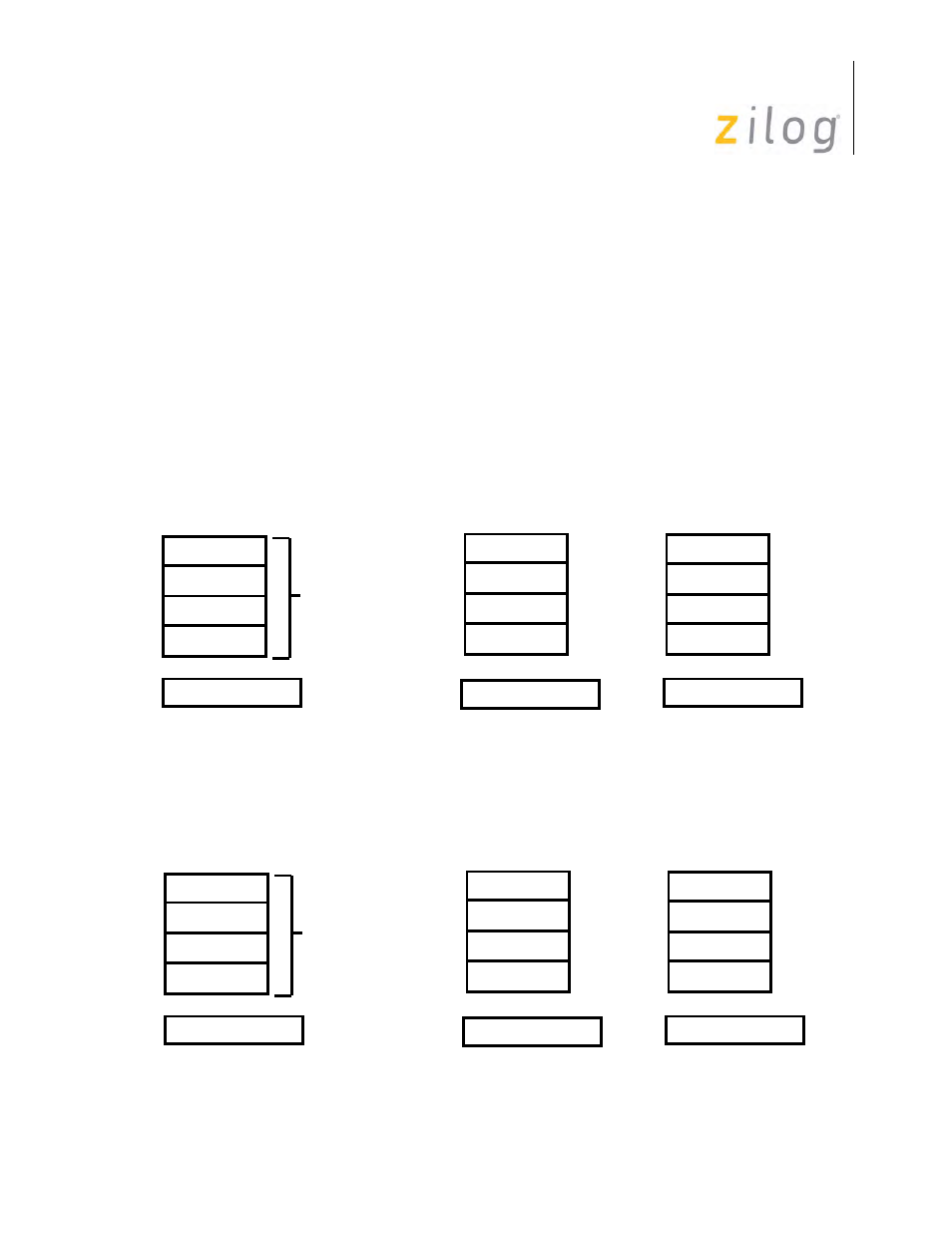Imately one pclk time), Figure – Zilog Z80230 User Manual
Page 59

SCC/ESCC
User Manual
UM010903-0515
Interfacing the SCC/ESCC
52
An enhancement to the ESCC from the NMOS/CMOS version is that the CRC has priority over
the data, where on the NMOS/CMOS version data has priority over the CRS. This means that on
the ESCC the CRC bytes are guaranteed to be sent, even if the data for the next packet has written
before the second transmit interrupt, but after the EOM/Underrun condition exists. This helps to
increase the system throughput because there is not waiting for the second transmit interrupt. On
the NMOS/CMOS version, if the data is written while the CRC is sent, CRC byte(s) are replaced
with the flag/sync pattern followed by the data.
Another enhancement of the ESCC is that it latches the transmit interrupt because the CRC is
loaded into the Transmit Shift Register even if the transmit interrupt, due to the last data byte, is
not yet reset. Therefore, the end of a synchronous frame is guaranteed to generate two transmit
interrupts even if a Reset Tx Int Pending command for the data created interrupt is issued after
(Time “A” in
on page 52) the CRC interrupt had occurred. In this case, two reset Tx Int
Pending commands are required. The TxIP is latched if the EOM latch has been reset before the
end of the frame.
Transmit Interrupt Status When WR7’ D5=1 For ESCC
01
TxFIFO
Tx Shift Register
No Transmit Interrupt
TxIP=0
04
03
02
Transmit Interrupt
TxIP=1
04
03
02
No Transmit Interrupt
TxIP=0
01
TxFIFO
Tx Shift Register
TBE=0
04
03
02
TBE=1
04
03
02
TBE=1
Opening Flag
01
04
03
02
